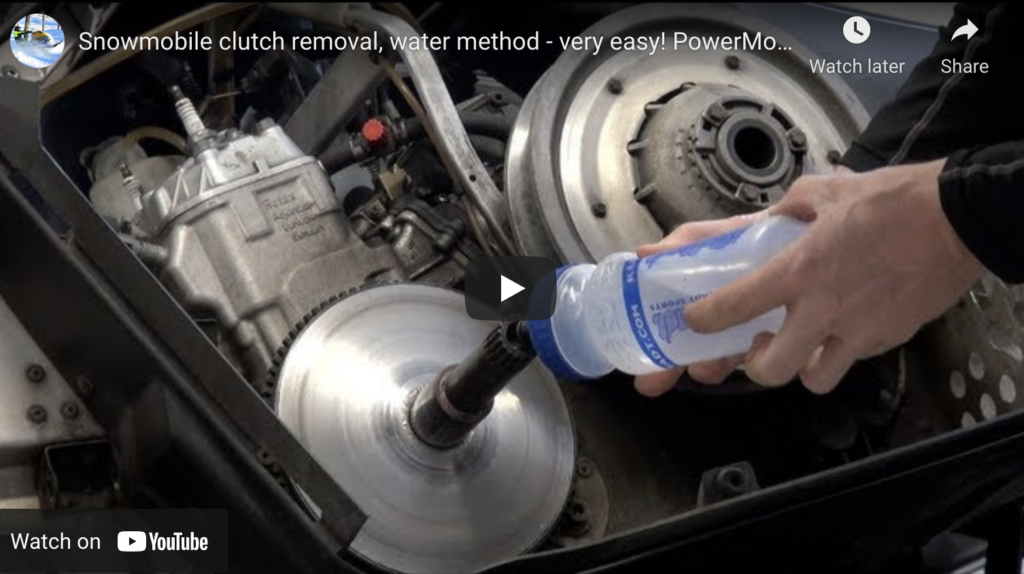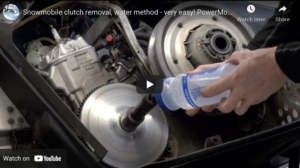Menu

Snow season might be a beauty to behold, but over time driving in snow can be a hassle as well as a weight on your pocket.
Instead of having to spend repeatedly on new tools to remove a stuck clutch plate, simple tricks exist that can help get the job done. With the combined power of physics and some creativity, loads of problems can be solved!
Read on to know how to get the clutch off without a puller. You will not be disappointed at the speed and simplicity of the mentioned tick!

The main function of the clutch in manual automobiles is to transfer the power the engine generates to the shafts, and these allow the machine to move forward, be it on snow, on a straight track, or on an inclined slope.
Due to this increased amount of power that gets transferred with each ride, the clutch gets exposed to friction, and over time its performance drops. This shows a drop in its ability to accelerate and will need cleaning and even replacement. To do this, the clutch needs to be removed.
The main tool used by mechanics to remove the clutch is the help of a puller. The puller works with the assistance of a threaded screw. It pulls on the crank and works to separate the clutch from the rest of the machine. This method can be replaced with simple methods, as mentioned below.
This method makes use of water to create hydraulic pressure for the removal of a stuck clutch.
Things you will need
· Water for filling the blocked clutch
· Teflon Tape for alignment of the bolt’s strings
· Original bolt (This should be compatible with the bolt of the clutch)
· Breaker bar with a 21 mm mouth for pivoting
· Safety goggles
· Tie-strap (optional)
· Rough rug or towels
Steps
1. Flip your snowmobile onto its side, the side should be opposite the side where you will be retrieving the clutch. This trick will keep your floor safe from any dents or marks. (You can line the floor with a rough rug or spare towels to keep leaking oil or fluid that comes out of your snowmobile from damaging your floors)
2. Use the Teflon tape to cover the end of your original bolt generously, making sure a thick coat is made at one end. This creates a seal that uses the water as a hydraulic fluid that ultimately pushes the clutch off.
3. Pour a decent amount of water into the clutches’ upper opening, making sure the water covers most of the surface, yet does not overflow. (Note: Wear goggles before inserting the bolt in the water to avoid splashes into your eye).
4. Insert the tape-covered bolt into the water (Note: Insert the bolt, making sure the threads' tail goes away from the direction you are winding).
5. Rotate the bolt clockwise inside the clutch until it gets tight, once this happens take your breaker bar and carefully rotate it holding the bolt in an anticlockwise direction. Continue this circular motion until the clutch pops right off.
Things to keep in mind
· Once the bar gets tight, the clutch will be difficult to hold with one hand as it will move. Try to not do this task alone, but have a second pair of hands to hold the clutch while you exert the effort.
· Another method is to use a tie strap to hold the metal parts if you don’t have a second person with you. This will make it easy for you to get the job done without needing a helping hand.
· It is essential to wrap the tape in accordance with the strings bearings, this will prevent the tape from ripping off when it is exposed to force.
· Use water that is at room temperature or is lukewarm. It is best to not use water at a cool temperature as this can mess with the machine’s internal workings.
· Once the cleaning or replacement is done, the clutch can be placed back in place by torqueing the bolt in place.
This method uses some pieces of bread to remove an adamant clutch from an automobile.
Things you will need
· Bread (white or brown)
· A three-quarter inch bolt with a 16 thread per inch mouth
· Rod of medium length
· Wrench (any size that fits your machine)
Steps
1. In the opening of the clutch, insert bread by breaking it into small pieces and stuffing them inside the hole. Repeat this until you feel pressure and resistance when inserting and spinning your bolt in the clutch.
2. Next, horizontally place a rod on the wheels’ upper portion, fixing it between the waves of the metal structure.
3. Insert it in the clutch and turn until the clutch pops out.
Things to keep in mind
· Using this technique, the clutch separates from the rest of the car with a strong jerk, practically flying off. Keeping a safe distance is important to avoid injuries. Keep your face away from the clutch. Mental presence and readiness are also crucial to ensure the safety and success of the method.
Once the process of removing the clutch has been successful, the next thing is knowing what to do with it. If your reason for removal was a damaged clutch, you can send it off for repair, or opt for a new one. However, if your clutch is okay to use but only dirty from all the work, you need to carefully clean it.
Two methods of cleaning exist, depending on your need and the metals requirement. Removing both joined portions of the clutch, called the primary and secondary, is slightly challenging. The cleaning techniques depend on your ability to separate the two.
Quick cleaning
Either method requires you to firstly remove the belt. Once this is done, you can move on to the type of cleaning. A simple quick fix makes use of brake cleaner that is sprayed on the sheaves, along with mechanical removal of dust and dirt from the air compressor. Scrubbing the clutches fronts with an abrasive pad until it is shiny and clean is all that is needed. This type of cleaning should be done frequently, preferably once a month.
Deep cleaning
Deep cleaning requires more attention. It starts off by taking off the belt and then removing the clutch as mentioned in the sections above. Next, disassemble the bolts and remove the spacers and weights, as well as the springs. Use a brake cleaner to spray every removed part to get rid of accumulated grease and dirt.
Using an abrasive pad, scrub each part as mentioned above, but particularly targeting the separated parts of the clutch. Once this is done, use a toothbrush to reach every minute disassembled chunk. After all the parts are neat and shiny, reassemble them in place again. Deep cleaning should be done once every season but should be done with care and attention to detail.
A puller as a tool is a fantastic apparatus to keep around your shop or place. Apart from separating the clutch, it serves a number of purposes that are not confined to an auto or snowmobile. They are also easily available in shops and are stress-free to afford.
As you experience situations with your snowmobile and need quick ways to fix them, you will learn that the method of using water to get the clutch off without a puller is a much more effective method than using a puller. The main reason for this is the straightforward practice and readily available tools this technique makes use of.
For many people who prefer to stick to the book methods of solving a problem, the above-mentioned technique might seem illegal. It is best not to think low of this technique especially since it is more effective in removing a broken clutch than a puller.
In the absence of a puller, using the hydraulic pressure-driven technique makes the task of getting rid of a problematic clutch as simple and reliable as it can be. Physics, in all its glory, can solve numerous problems if you wish to make good use of it.
With this said, no one-trick solution exists for any problem, it is a game of trial and error and adapting what works for you and what doesn’t. Do not hold back on new adventures out of the fear of failure and getting stuck. Keep practicing, you will find a way!